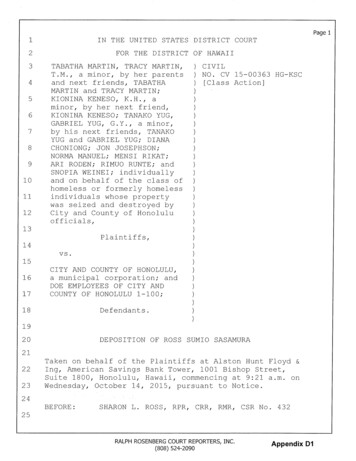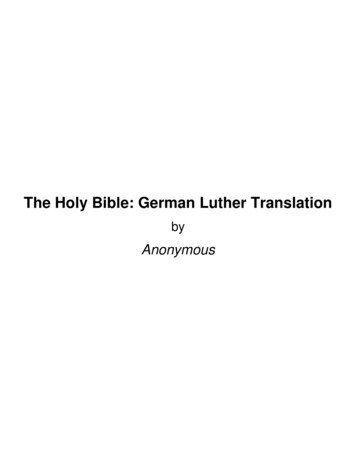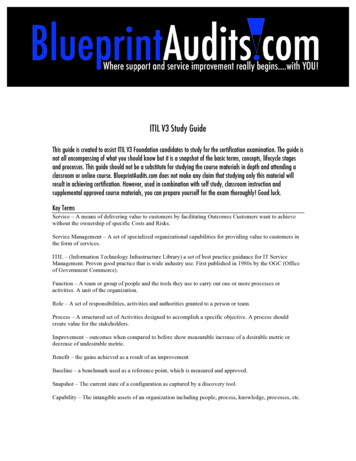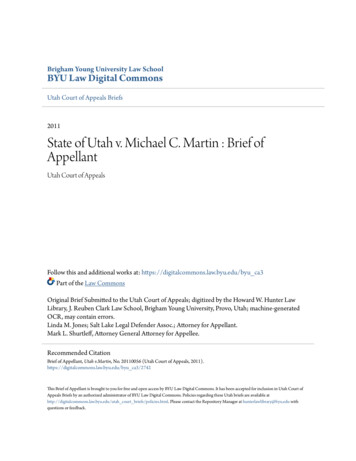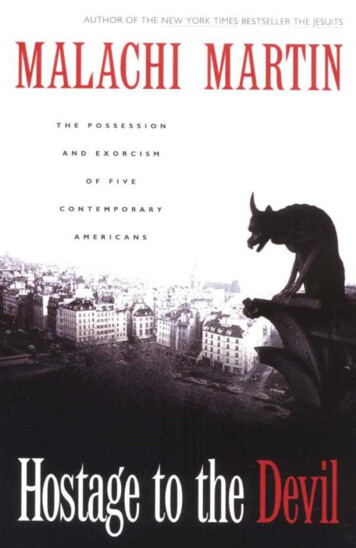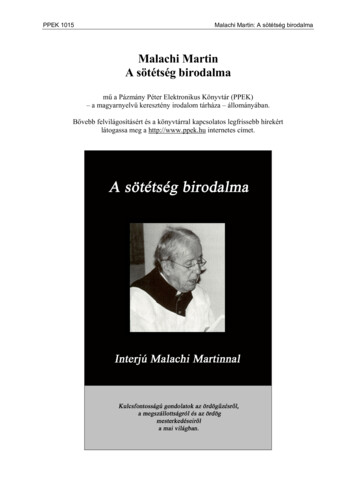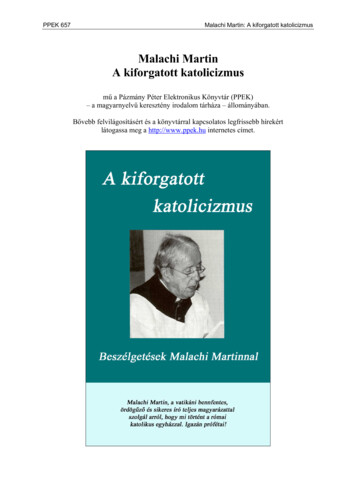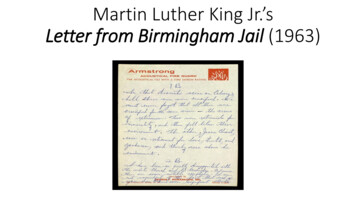
Transcription
Martin Luther King Jr.’sLetter from Birmingham Jail (1963)
Background to The Letter from Birmingham Jail During the 1950s and the 1960s the U.S.experienced the Civil Rights Era In May 1954 the U.S. Supreme Court hadissued its decision in Brown v. Board ofEducation, overturning Plessy v. Ferguson’s“separate but equal” ruling In December 1955 Rosa Parks was arrestedduring the Montgomery Bus Boycott In early 1960 the Greensboro, N.C. sit-instook place From May to December 1961 FreedomRiders rode interstate buses into the Southto protest against segregation laws
Martin Luther King Jr. (1929-1968) King was the son of an important Baptistclergyman from Atlanta He entered Morehouse College in Atlanta atthe age of 15 and graduated with a BA inSociology several years later He was then educated at Crozer TheologicalSeminary (in Pennsylvania) and BostonUniversity After marrying Coretta Scott King in 1953,King became pastor of Dexter AvenueBaptist Church in Montgomery, Alabama in1954 In 1957 he helped found the SouthernChristian Leadership Conference (or SCLC)
On 12 April 1963 Martin Luther King, Jr. was arrestedand spent 8 days in jail in Birmingham, Alabama King had gone to Birmingham withSouthern Christian LeadershipConference colleagues Ralph Abernathy,Fred Shuttlesworth and others as part ofa non-violent campaign of protestagainst racism and segregation On 10 April, Circuit Court judge W.A.Jenkins had issued a court orderprohibiting “parading, demonstrating,boycotting, trespassing and picketing” King and others disobeyed the order andon April 12 they were arrested as a result Irony: In 1963, April 12 was Good Friday
While in jail, King was given a local newspaper in which he read astatement, “A Call to Unity,” by eight white clergymen from Alabama,including Earl Stallings, pastor of the First Baptist Church in Birmingham,criticizing King and the other protesters Provoked by this article, King decidedto draft a reply. He wrote down somecomments first in the margin of thenewspaper, and later on writing paperprovided to him by his attorneys. The clergymen had not only criticizedhis methods but also asked why King,an outsider to Birmingham, was eventhere in the first place
Martin Luther King will respond to his critics ina lengthy letter He recognizes that they are notunsympathetic to his cause But he does take issue with theclergymen’s claims that: 1) he,Shuttlesworth, Abernathy andothers are meddling in somethingthat does not concern them; 2) heand his followers should negotiatefor change rather than conductprotests, etc.; 3) their actions are“untimely”; and 4) there is nojustification for their breaking thelaw
What was King’s purpose? To persuade the clergymen thathis cause was just and that hismethods were not onlyappropriate but also needed To help unite the AfricanAmerican community and givecoherence to their protests To reach out to others,particularly white moderatesand other clergymen
Length and Structure of the Letter? Letter is very long (in your textbook, 45 paragraphs totaling approx. 7,000words) Introduction first paragraph Body of letter:a. King responds to questions asked by the clergymen intheir open letter in The Birmingham News (paragraphs2-20); e.g., they ask why he resorted to demonstrations rather thannegotiations?b. King defends his actions while expressing disappointment with whitemoderates and white churches (paragraphs 21-39)c. King takes issue with the clergymen commending the Birmingham police forrestraint when in fact it was, he says, the protestors who should becommended (paragraphs 40-42)‘ Conclusion King makes conciliatory gestures and appeals forsupport (last 3 paragraphs)
Influence of The Letter on subsequent people andevents? On 28 August 1963, MartinLuther King, Jr delivers his “IHave a Dream” speech inWashington, D.C. In the 1970s and 1980s, Poland’sSolidarity movement andCzechoslovakia’s Charter 77initiative are inspired by King Likewise, during the 1980s inSouth Africa, Nelson Mandelaand Archbishop Desmond Tutuare motivated by Dr. King
Background to The Letter from Birmingham Jail During the 1950s and the 1960s the U.S. experienced the Civil Rights Era In May 1954 the U.S. Supreme Court had issued its decision in Brown v. Board of Education, overturning Plessy v. Ferguson’s separate but equal ruling In December 1955 Rosa Parks was arrested during the Montgomery Bus Boycott In early 1960 the Greensboro, N.C .
